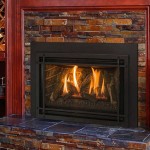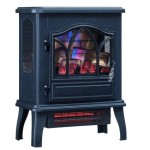How To Paint Brass Fireplace Doors
Many homeowners with fireplaces find themselves wanting to update the look of their brass fireplace doors. Over time, brass can become tarnished, dated, or simply not align with a new aesthetic. Painting brass fireplace doors offers a cost-effective solution to refresh a living space and modernize the fireplace without the expense of replacement. This guide provides a comprehensive approach to successfully painting brass fireplace doors.
Before beginning, it is crucial to understand the intricacies involved. Brass, being a non-ferrous metal, requires specific preparation and paint products to ensure proper adhesion and a durable finish. Using the wrong materials or skipping critical preparation steps can result in peeling, chipping, or an overall unsatisfactory outcome. This detailed guide will walk through the necessary steps, from preparing the surface to applying the final coat, ensuring a professional-looking and long-lasting paint job.
Key Point 1: Proper Preparation is Paramount
The success of painting brass fireplace doors hinges significantly on meticulous preparation. The goal is to create a clean, slightly roughened surface that allows the paint to adhere effectively. Neglecting this step will compromise the bond between the paint and the brass, leading to premature failure.
The initial step involves removing the fireplace doors from the fireplace itself. This is essential for ease of handling and ensuring thorough preparation of all surfaces. Carefully detach the doors, taking note of any hardware or mechanisms that need reassembly later. Place the doors on a protected work surface, such as a drop cloth or old newspapers, in a well-ventilated area. Safety glasses and gloves are recommended throughout the process.
Next, a thorough cleaning is necessary to remove any dirt, grease, soot, or existing coatings. Use a degreasing cleaner specifically designed for metal surfaces. Apply the cleaner according to the manufacturer's instructions, paying particular attention to areas that may have accumulated grease or residue. Rinse thoroughly with clean water and allow the doors to dry completely.
Once the doors are dry, the crucial step of surface preparation begins. Lightly sanding the brass is essential to create a "tooth" for the paint to grip. Use fine-grit sandpaper (220-grit or higher) and gently sand the entire surface of the doors. The objective is not to remove the brass entirely, but to create a slightly abraded surface. After sanding, remove the sanding dust with a tack cloth or a damp, lint-free cloth. Ensure the surface is completely clean and dry before proceeding.
Consider using a primer specifically formulated for non-ferrous metals. This primer is designed to adhere strongly to brass and provide a suitable surface for the topcoat. Apply the primer in thin, even coats, following the manufacturer's instructions. Allow the primer to dry completely before moving on to the painting stage. This primer layer is crucial for the longevity and appearance of the final painted surface.
Key Point 2: Selecting the Right Paint
Choosing the appropriate paint is just as important as surface preparation. Not all paints are created equal, and using the wrong type can lead to poor adhesion, cracking, or blistering, especially given the heat exposure that fireplace doors endure.
For painting brass fireplace doors, heat-resistant paint is an absolute necessity. This type of paint is formulated to withstand high temperatures, preventing the paint from softening, bubbling, or releasing unpleasant odors when the fireplace is in use. Several options are available, including high-temperature spray paints and brush-on paints.
Consider ceramic-based paints. These paints offer excellent heat resistance and durability, making them a suitable choice for fireplace doors. They often come in a variety of finishes, from matte to satin, allowing customization of the final appearance.
Spray paint is generally preferred for achieving a smooth, even finish. However, brush-on paints can be used for more detailed work or if a textured finish is desired. Whichever type is chosen, ensure that it is specifically labelled as heat-resistant and suitable for metal surfaces. Always read and follow the manufacturer's instructions regarding application, drying time, and temperature ratings.
When selecting a color, consider the overall aesthetic of the room. Popular choices include black, bronze, and gray, as they tend to complement a variety of decorating styles. However, personal preference should ultimately guide the decision. Prior to painting the entire surface, it's good practice to test the chosen paint in an inconspicuous area to ensure the color and finish are satisfactory.
Key Point 3: Painting Technique and Post-Painting Care
The application of the paint requires patience and attention to detail. Proper technique will ensure a smooth, even, and professional-looking finish.
When using spray paint, hold the can approximately 8-10 inches from the surface of the doors. Apply the paint in thin, even strokes, overlapping each stroke slightly to avoid streaks or uneven coverage. Avoid applying too much paint in one area, as this can lead to drips and runs. For brush-on paint, use a high-quality brush designed for the type of paint being used. Apply the paint in smooth, even strokes, following the grain of the metal (if applicable). Avoid applying too much pressure, as this can leave brush marks.
Allow each coat of paint to dry completely before applying the next. The drying time will vary depending on the type of paint and the ambient temperature and humidity. Refer to the manufacturer's instructions for specific drying times. Typically, two or three thin coats are recommended for optimal coverage and durability. Lightly sand between coats with very fine-grit sandpaper (400-grit or higher) to remove any imperfections and ensure a smooth surface for the next coat.
Once the final coat of paint has dried completely, allow the doors to cure for the recommended time period before reattaching them to the fireplace. Curing allows the paint to fully harden and achieve its maximum heat resistance. Avoid using the fireplace during the curing period. After the curing period, reattach the doors carefully, ensuring that all hardware and mechanisms are properly reassembled.
Regular cleaning will help maintain the appearance of the painted fireplace doors. Use a soft cloth and mild soap to wipe down the doors as needed. Avoid using harsh chemicals or abrasive cleaners, as these can damage the paint finish. Regular inspection for chips or scratches is also advisable, and touch-up paint can be used to repair any minor damage.

Fireplace Door Update With Spray Paint Roots Wings Furniture Llc

How To Spray Paint A Brass Fireplace Insert Erfly House

Easily Update Your Brass Fireplace Within The Grove

How To Spray Paint A Brass Fireplace Insert Erfly House

How To Paint A Brass Fireplace Screen Addicted 2 Decorating

Fireplace Door Update With Spray Paint Roots Wings Furniture Llc

How To Update Fireplace Brass

How To Spray Paint A Brass Fireplace Bright Green Door

Painted Fireplace Doors 6 Steps With S Instructables

How To Paint Metal Fireplace Surround Four Generations One Roof
Related Posts








